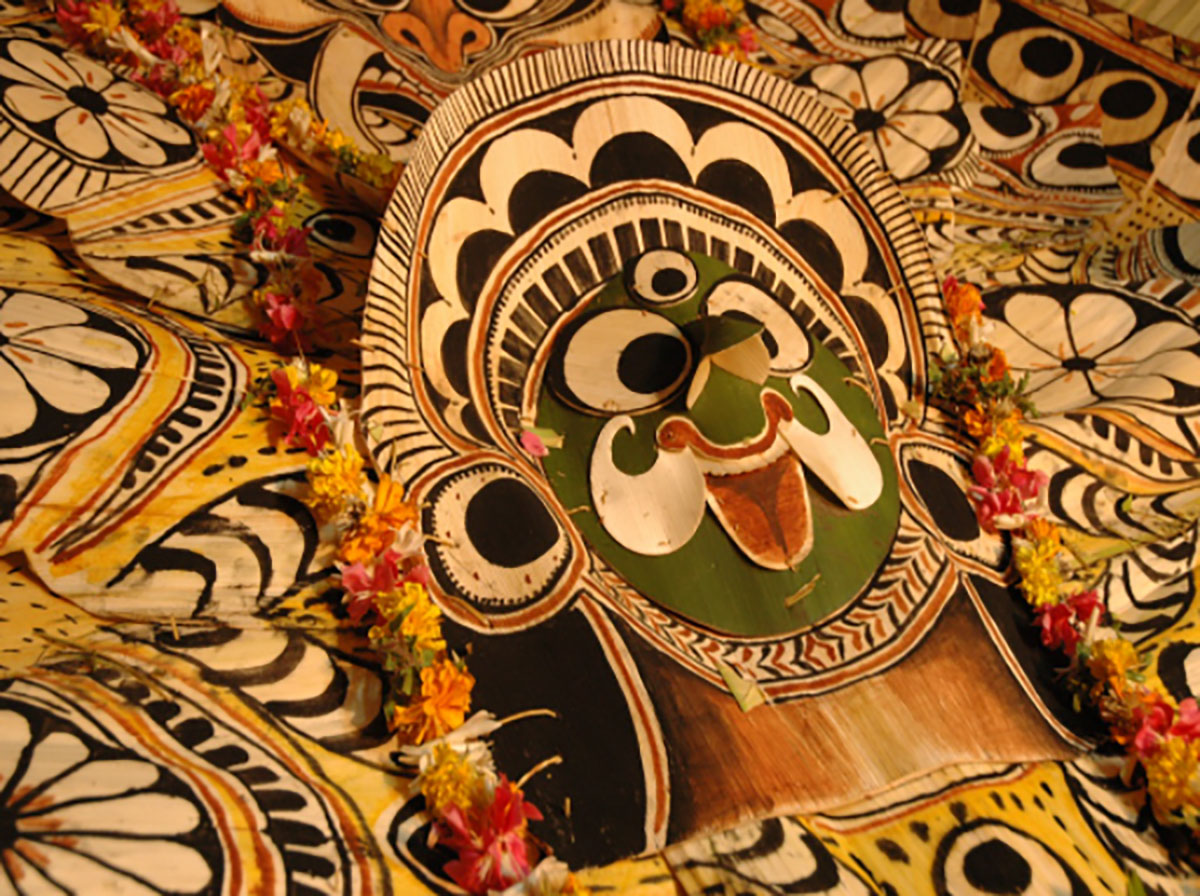ARTICLE
Padayani Masks
Colourful masks which may also include tiered headgear, padayani masks are used for various kinds of padayani performances in central and southern Kerala. Newly made masks are used every year, usually designed by members of the Ganaka community with the help of others in the village.
The masks represent kolams, divine characters and spirits. Their forms are believed to be terrifying, and the design of the masks reflects this. Frequently represented characters include Ganapathi kolam, the Yakshi kolam, the Pakshi kolam, the Pishachu kolam, the Bhairavi kolam, the Gandharvan kolam and the Mukilan kolam. There are multiple variations within these types: the Yakshi kolam, for instance, may indicate several kinds of earth deities with their own features, expressions and performance styles, like the Sundara, Anthara, Ambara, Arakki, Erinaga, or Kaala Yakshi. The Kaala Yakshi mask is painted black and decorated with red silk, coconut leaves and ilanji (Indian medler) flowers, meant to evoke awe and terror in the audience.
The areca palm spathe is used for making the kolam mask. It is cut into the required shapes, which are then smoothed out for making the mask. Smoothened areca wood strips may be used to provide a structure for these shapes. Paint is then applied to them with a brush made from tender leaves of the coconut palm. A black pigment is produced from the soot of burned coconut shells; red is made by grinding red stones, and yellow is made from turmeric. The original shade of the spathe is used for green colouration, or rubbed off for white. Charcoal, vermillion and other natural pigments are also used to make the masks. Once the painting and decoration is complete, the shapes and structure are joined together with strips of coconut leaf.
Some variations of padayani, like the Neelamperoor padayani held in the Alappuzha district of Kerala, may use large effigies representing terrain features as well as animal and Puranic characters, instead of facial masks. Such effigies are also made from the spathe of the areca palm tree, arranged in layers with coconut leaves. The leaves of the lotus plant, colocasia and jackfruit tree are also used. The stem sheath of the banana plantain, as well as ixora flowers, is used for decoration. Kolams made from the leaves of jackfruit trees are small in size and intended to be carried on the shoulders. Annams are bigger kolams, ranging in size from five to fifty feet, requiring wheels to be moved.
Padayani masks and effigies are typically used for the performances they are made for, and then disposed of. Padayani is one of Kerala’s most popular performance styles today.
Bibliography
Our website is currently undergoing maintenance and re-design, due to which we have had to take down some of our bibliographies. While these will be re-published shortly, you can request references for specific articles by writing to hellomapacademy@map-india.org.







